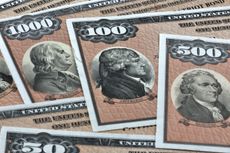The ABCs of Municipal Bonds
Build schools and bridges and earn attractive tax-free yields. Here are three ways to invest.

Attention, income investors: When times get tough, your first inclination may be to move all of your bond money to Treasuries. But entrusting Uncle Sam with your cash isn't the only safe course. Municipal bonds offer competitive yields and tend to hold their own during tumultuous times.
The big allure of munis is that their interest is generally exempt from federal income taxes. The bonds are issued by state and local governments and related agencies to finance general operations or public projects, such as construction of schools or sewage plants. Interest from bonds issued in an investor's home state is usually exempt from state income taxes, too.
Without the tax breaks, muni yields are downright paltry. In mid October, for example, the typical triple-A-rated muni bond yielded 4.0%. But for an investor in the 28% tax bracket (taxable income in 2007 of $77,100 to $160,850 for a single person or $128,500 to $195,850 for a married couple filing jointly), that's the equivalent of 5.6% from a taxable bond. For someone in the top 35% bracket (more than $349,700 of taxable income for either a single person or a married couple), a tax-free 4.0% is the equivalent of 6.2% from a taxable bond (to calculate taxable-equivalent yield, divide the stated yield by one minus your federal tax bracket, expressed as a decimal). By contrast, ten-year Treasury notes currently yield 4.7%.

Sign up for Kiplinger’s Free E-Newsletters
Profit and prosper with the best of expert advice on investing, taxes, retirement, personal finance and more - straight to your e-mail.
Profit and prosper with the best of expert advice - straight to your e-mail.
But is it fair to compare munis with Treasuries, which have zero chance of defaulting? In a word, yes. Historically, the odds that an investor who holds a muni for 20 years will see an issuer miss a payment are less than 1 in 400.
Which is not to say the bonds never lose value. Like the prices of most other bonds, muni prices move inversely with interest rates. Moreover, low-quality munis can lose value when investors become concerned about the overall health of the economy or when trading volume dries up — as happened during the bond market's stumble in August. That month, the average investment-grade muni bond lost 0.4%, but the average junk-rated muni sank 3%.
Still, munis are a relatively safe way of earning more than you can get with Treasuries. And there are a lot of different ways to invest in tax-free bonds. Consider these three approaches.
Buy Directly
Because the muni market isn't centralized the way the stock market is, buying individual bonds takes some legwork. But the rewards of direct ownership are compelling — you know exactly what you own, what it yields and when it's due to mature (or when it may be called, or redeemed, before it matures). Moreover, if you own the bonds directly, you don't have to worry about management fees chipping away at your modest income.
You can buy munis through most large brokers. Commissions aren't readily discernible when you buy a muni bond. Instead, broker markups are reflected in a bond's quoted yield and the price you pay for it. Transaction costs generally range from 0.5% to 3% of principal, depending on the size of the order (munis usually come in $5,000 increments) and the maturity and quality of the bonds. To make sure the price and yield of a particular bond are reasonable, go to www.investinginbonds.com to find recent trades of similar issues. Also, find out if a bond can be called before its maturity date.
Ruth Forehand, a financial planner in Naples, Fla., recommends building a "muni ladder" out to, say, seven years. That means buying bonds that will mature in one, two, three years and so on — through seven years. That way, if interest rates rise, you can reinvest cash from maturing bonds at a higher yield.
General-obligation bonds are good options because they're backed by the taxing power of the issuer and tend to be widely traded. You can do even better than triple-A-rated GOs by buying bonds backed by a private insurer. In mid October, for example, one broker was offering insured California Housing Finance Agency revenue bonds with a 4.35% coupon and maturing in August 2017. The bonds, which sold for slightly more than par, or face value, yielded 4.3% to maturity, equivalent to 6.0% for a 28%-bracket taxpayer.
Fund Choices
Because yields on tax-free bonds are low, it's important to pick a muni mutual fund with low expenses. Vanguard charges minuscule expenses for its bond funds, and Fidelity has tiny fees as well. Both firms run excellent funds that benefit from experienced management and large research teams.
Our top choice is Fidelity Intermediate Municipal Income, a member of the Kiplinger 25. The fund (symbol FLTMX) yields 3.6%, equivalent to 5.0% before taxes for an investor in the 28% tax bracket. But be aware that 9% of the fund's assets are in bonds that pay interest subject to the alternative minimum tax. Annual expenses are 0.34%. Half as expensive is Vanguard Intermediate-Term Tax-Exempt (VWITX). It yields 3.9%, or the equivalent of 5.4% for a 28%-bracket taxpayer, and it holds just 0.9% of assets in bonds subject to the AMT.
Closed-End Funds
Great deals abound for closed-end muni funds. Closed-ends trade like stocks, but almost always at prices that differ from the value of the assets they hold. That means you can often buy closed-ends at discounts to their net asset value, or NAV. Moreover, closed-ends can often borrow money to boost yields, although doing so also increases risk and volatility.
Two leveraged closed-end funds worth a look are Putnam Investment Grade Municipal Trust (PGM) and Morgan Stanley Insured Municipal Income Trust (IIM). In mid October, the Putnam fund traded at $9.60, or a 10% discount to NAV, and it yielded 5.1%. The Morgan Stanley fund traded at $13.75, which also represented a 10% discount, and yielded 5.0%. A good choice among unleveraged closed-ends is Nuveen Select Tax-Free Income Portfolio 2 (NXQ). At about $13.50, it traded at a 6% discount and yielded 4.7%.

-
 Save Over $40 on Audible With Amazon's Latest Deal
Save Over $40 on Audible With Amazon's Latest DealAmazon’s latest promotion lets you score three months of Audible for just $0.99 a month.
By Erin Bendig Published
-
 Buy eBay and Sell Etsy, Morgan Stanley Says
Buy eBay and Sell Etsy, Morgan Stanley SaysMorgan Stanley is bullish on eBay and bearish on Etsy. Here’s what you need to know.
By Joey Solitro Published
-
 Best Banks for High-Net-Worth Clients
Best Banks for High-Net-Worth Clientswealth management Kiplinger's 2023 list of the best banks for higher-net-worth clients.
By Lisa Gerstner Published
-
 Stock Market Holidays in 2024: NYSE, NASDAQ and Wall Street Holidays
Stock Market Holidays in 2024: NYSE, NASDAQ and Wall Street HolidaysMarkets When are the stock market holidays? Take a look at which days the NYSE, Nasdaq and bond markets are off in 2024.
By Kyle Woodley Last updated
-
 Stock Market Trading Hours: What Time Is the Stock Market Open Today?
Stock Market Trading Hours: What Time Is the Stock Market Open Today?Markets When does the market open? It's true the stock market does have regular hours, but trading doesn't necessarily stop when the major exchanges close.
By Michael DeSenne Last updated
-
 Bogleheads Stay the Course
Bogleheads Stay the CourseBears and market volatility don’t scare these die-hard Vanguard investors.
By Kim Clark Published
-
 I-Bond Rate Is 5.27% for Next Six Months
I-Bond Rate Is 5.27% for Next Six MonthsInvesting for Income I-Bonds issued November 1, 2023 through April 30, 2024 will have a rate of 5.27%.
By David Muhlbaum Last updated
-
 What Are I-Bonds?
What Are I-Bonds?savings bonds Inflation has made Series I savings bonds enormously popular with risk-averse investors. So how do they work?
By Lisa Gerstner Last updated
-
 This New Sustainable ETF’s Pitch? Give Back Profits.
This New Sustainable ETF’s Pitch? Give Back Profits.investing Newday’s ETF partners with UNICEF and other groups.
By Ellen Kennedy Published
-
 As the Market Falls, New Retirees Need a Plan
As the Market Falls, New Retirees Need a Planretirement If you’re in the early stages of your retirement, you’re likely in a rough spot watching your portfolio shrink. We have some strategies to make the best of things.
By David Rodeck Published